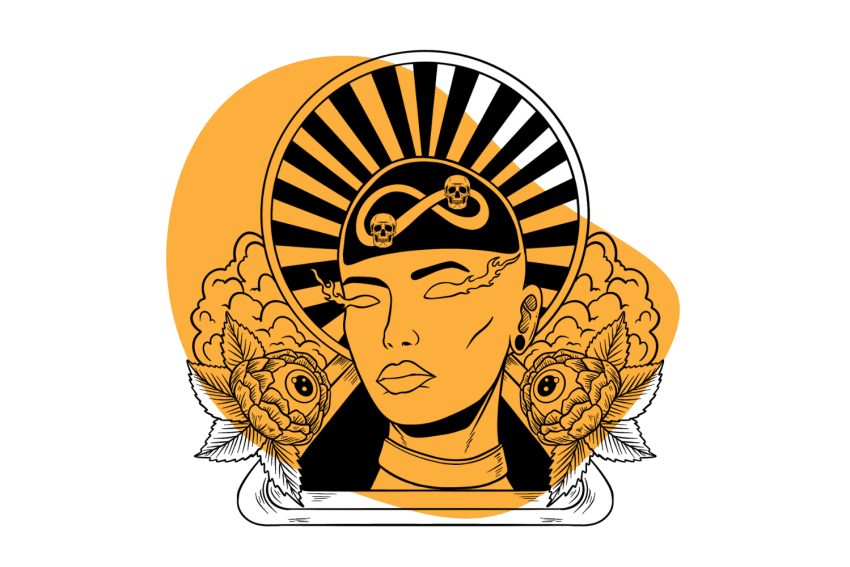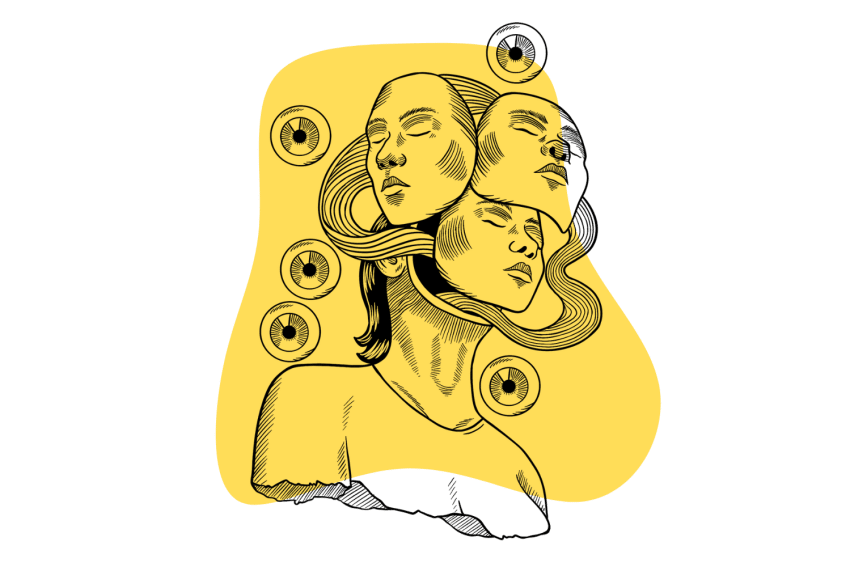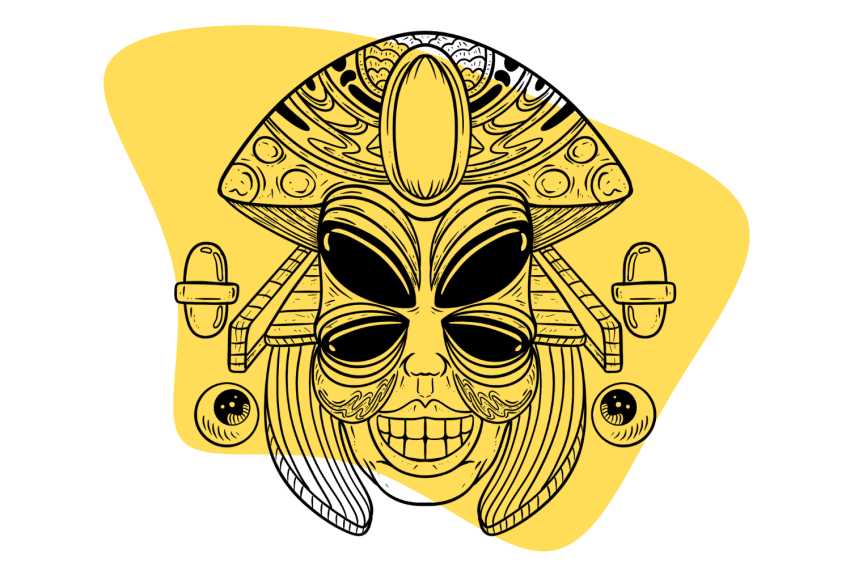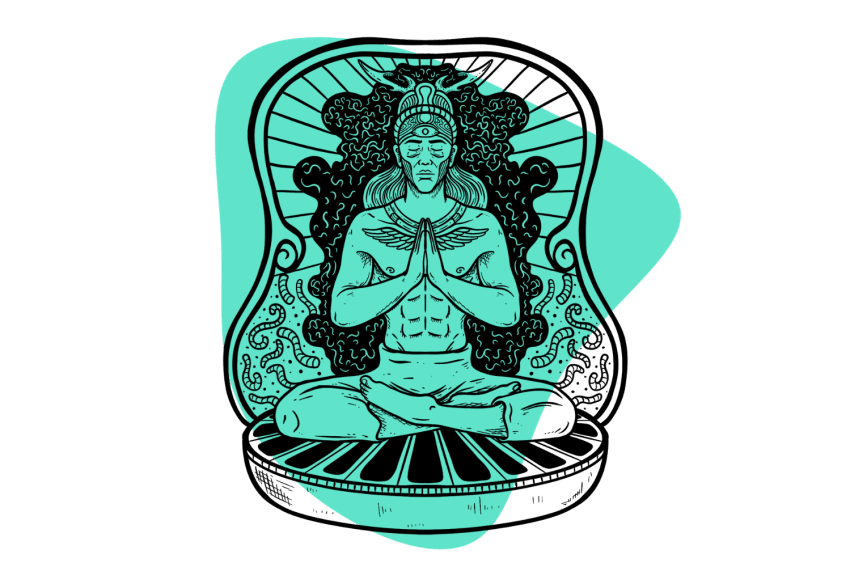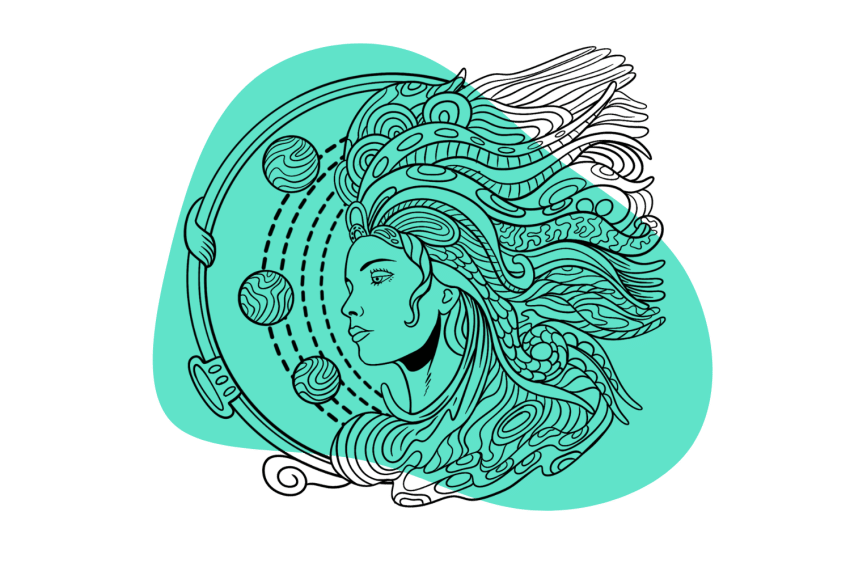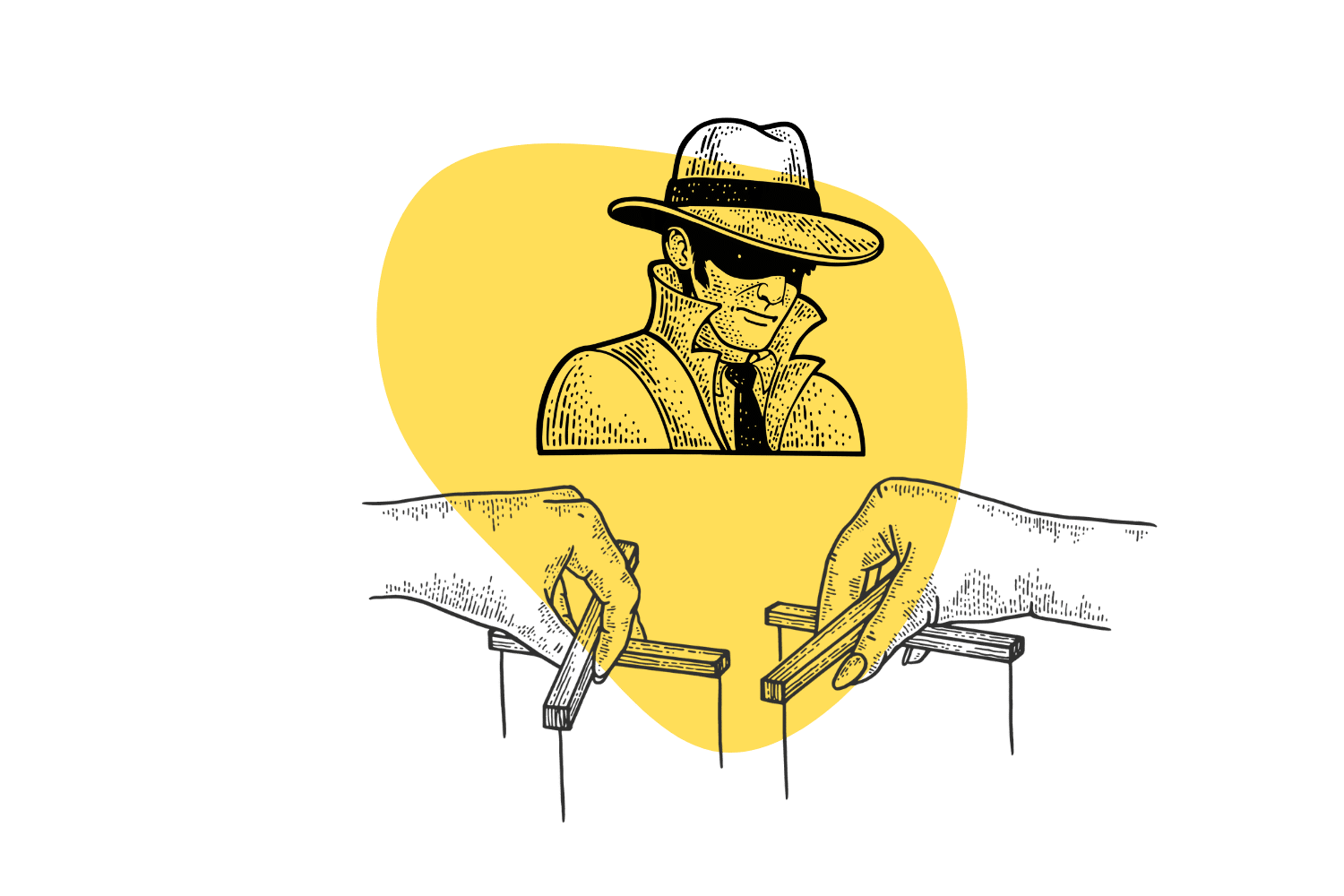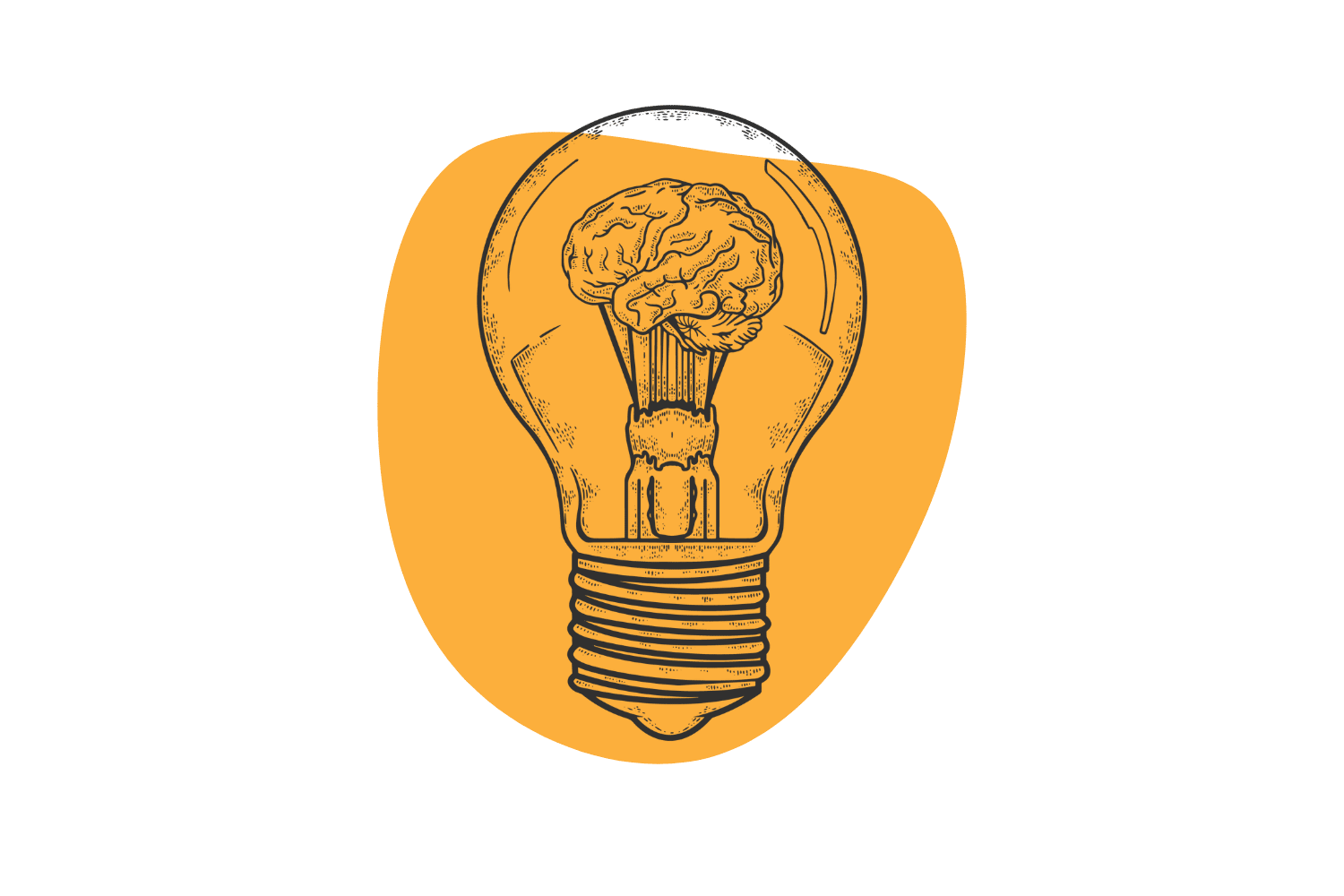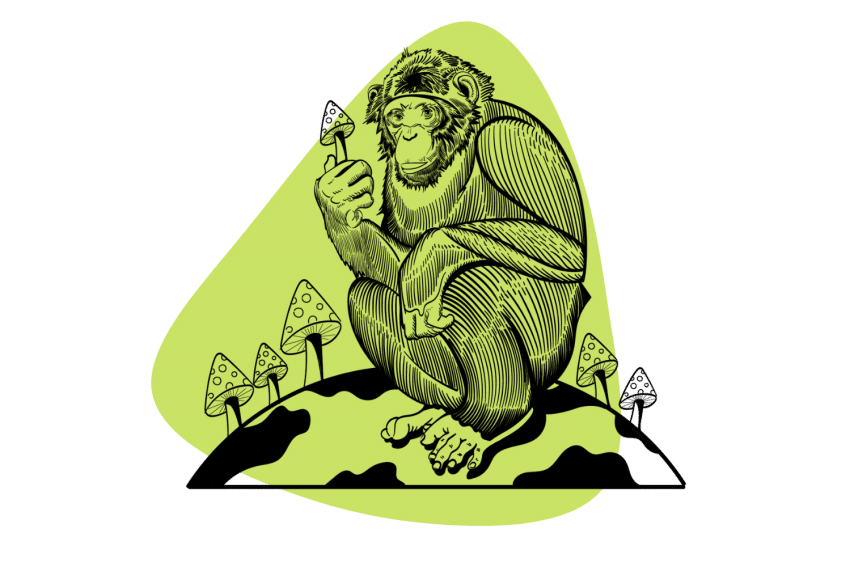Shamanism: Harnessing The Power of Consciousness
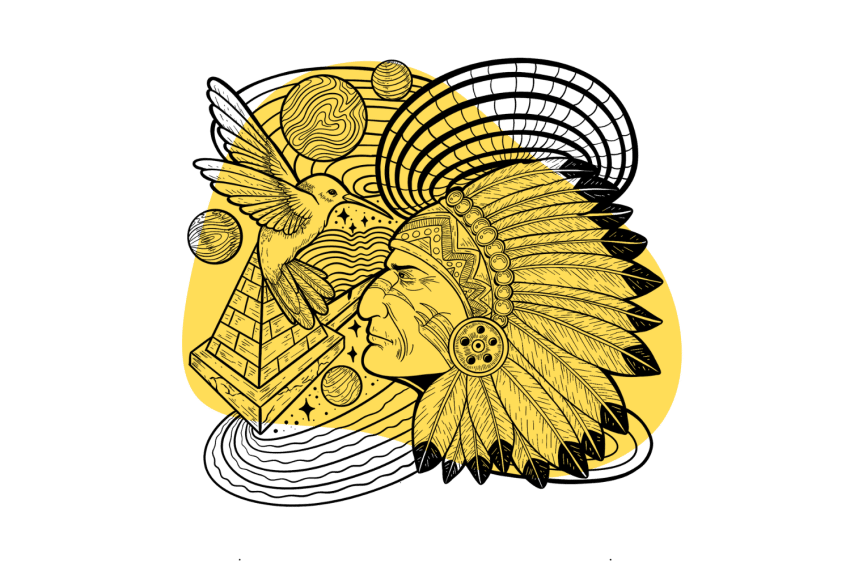
Much of the knowledge regarding psychedelic plants and fungi were obtained by studying the shamanic cultures that used them.
Natural substances such as salvia, peyote, fly agaric, magic mushrooms, bufo toad venom, and ayahuasca were all used to facilitate a direct connection between trained shamans and the divine.
It was through this connection that the shaman derived his or her capacity to heal and access sacred knowledge. This knowledge was used to provide guidance to the rest of the community.
Today, shamanism is alive and well, but it’s taken on new forms as a result of the increasingly globalized world.
Here, we’ll explore what shamanism means, how shamanic practices differ around the world, and what makes the so-called “neo-shamanism” so different from traditional shamanism.
What is Shamanism?
Shamanism is a practice where a trained and community-vetted practitioner (the shaman) acts as an interface with the spirit world through altered states of consciousness for the purpose of divination, healing, or spiritual advancement.
Some definitions refer only to the practices of indigenous populations in northern Europe and Siberia; others include the practices of Southeast Asia, Africa, and South America.
Some anthropologists add additional qualifiers and disqualifiers to exclude other magico-religious specialists such as mediums, psychics, prophets, or witch doctors. There are also attempts to exclude so-called “plastic shamans” or “neoshamanism” from the definition of what authentic shamanistic practices entail.
Regardless, shamanism is a broad term covering numerous spiritual practices and traditions from all over the world. There are plenty of definitions for what classifies as authentic “shamanism,” and many anthropologists and indigenous community members criticize the term for trying to squeeze a wide range of diverse and unrelated cultural practices into one box.
With that said, there are some conventions generally associated with traditional shamanism:
- Altered states of consciousness are considered a core aspect of the practice.
- Knowledge about shamanistic practices is controlled and awarded by the community & previous generation of practitioners.
- Training to become a shaman requires many years of practice and is achieved after enduring significant pain and hardship.
- A shaman must have pure intentions and an unwavering responsibility to the physical and spiritual health of the community.
- One must not seek the path of a shaman for the purposes of material or financial gain.
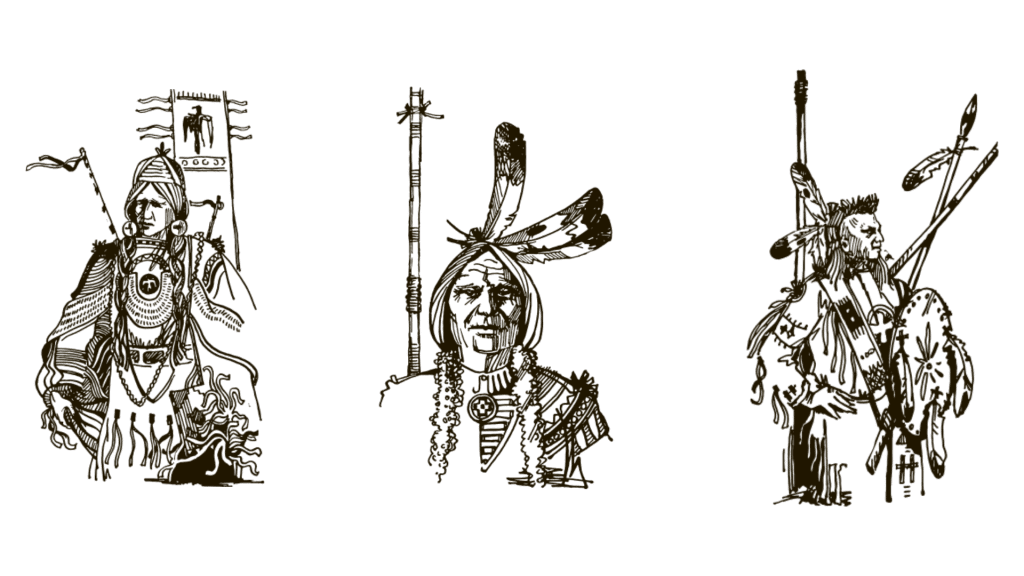
What Does a Shaman Do?
A traditional shaman is the healer of the community. They use techniques such as ceremonial dancing, singing, drumming and use various props like feathers or rattles, incense, and psychoactive or aromatic herbs in order to initiate and maintain altered states of consciousness for themselves or their patients.
During the altered state of consciousness, the shaman is tasked with manipulating the experience to guide the subject where they need to go and protect them from falling victim to malicious entities that could take advantage of their inebriated state.
Shamans are also (often) responsible for providing guidance to the leaders of the group by consulting and gaining pieces of wisdom from spirits or deities.
The title of the shaman in indigenous communities around the world carries a very high level of respect — but also comes with a significant amount of responsibility to the community.
Shamans are often prevented from leveraging their craft for material or financial gain, and the title can be stripped should the fundamental rules be broken. The duties expected from a shaman depend on the community — the practice of shamanism does not have a unified set of rules or pre-requisites. A shaman in Siberia follows different rules than a shaman in Peru.
With that said, here are some of the common practices associated with shamans:
- Shamans act as an interface with the spirit world for the purpose of healing. Many use psychoactive plants or lucid dreaming to help establish this connection.
- During altered states of consciousness, the shaman remains fully present and aware — they may step in to manipulate and guide the user through their experience or stand aside and protect the user from malevolent spirits encountered during their journey.
- After the experience or following visionary dreams, the shaman helps interpret the meaning behind the imagery.
- Shamans may use altered states of consciousness to obtain cosmic knowledge that can be used to guide important decisions for the community.
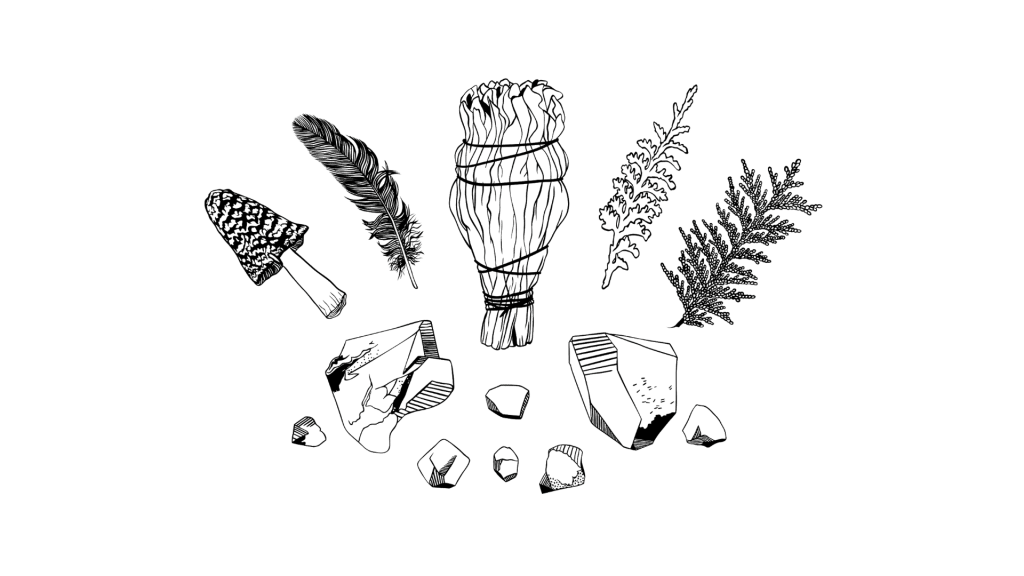
Who Can Become a Shaman?
There are no official, unified pre-requisites for becoming a shaman — however, each community in which individual shamanistic practices exist have their own set of requisites an individual must meet in order to earn the honorable title of shaman.
In many cultures, a shaman must train for many years under a mentor. Training usually starts at a young age (often as young as 11) and continues throughout the rest of one’s life. During this training, they are subjected to many “tests” to prove authenticity and purity. Shamans are usually chosen by the community based on various signs — such as unique birthmarks, excess bones, or “insights” identified by existing shamans in the community.
Becoming a shaman involves much more than simply taking a psychoactive substance and using drums or chants to induce mystical or spiritual experiences. It involves a dedication to the craft, exposure to profound personal loss and hardship, and a deep level of understanding of various plant medicines and regional spiritual concepts.
This is comparable to the modern training for a doctor. The process is difficult, involves extreme levels of sacrifice, and takes a very long time. This process is important in order to endure those who are eventually awarded the title have demonstrated a sufficient level of understanding and dedication to the craft.
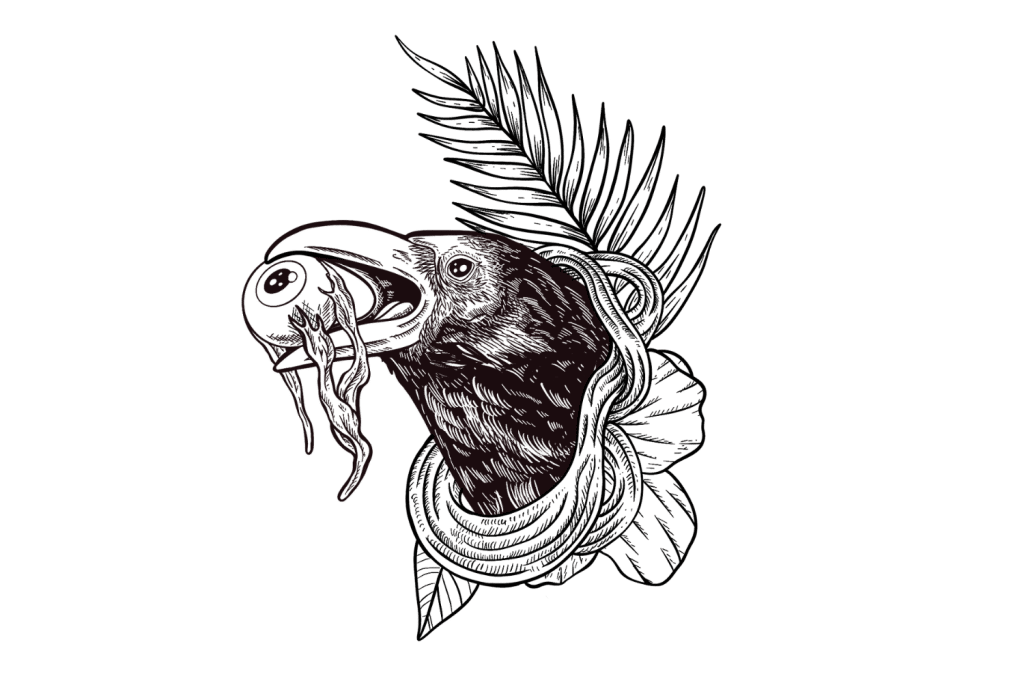
Criticism & Cultural Appropriation
The term shamanism isn’t perfect. It’s a generalistic and reductionistic concept that attempts to group numerous loosely-related cultural and religious practices together into one box.
The suffix “ism” itself carries particular criticism as it implies a particular “dogma” — however, shamanism is practiced differently all over the world. The rules and expectations that come along with the title are diverse and cannot be placed into one group. Some anthropologists suggest using the terms “shamanhood” or “shamanship” instead for this reason.
Secondly, western forms of “neoshamanism” have been widely criticized by anthropologic and indigenous communities as being a form of cultural appropriation. Neoshamanism dilutes and misrepresents indigenous practices — often for material gain (such as having paid clients).
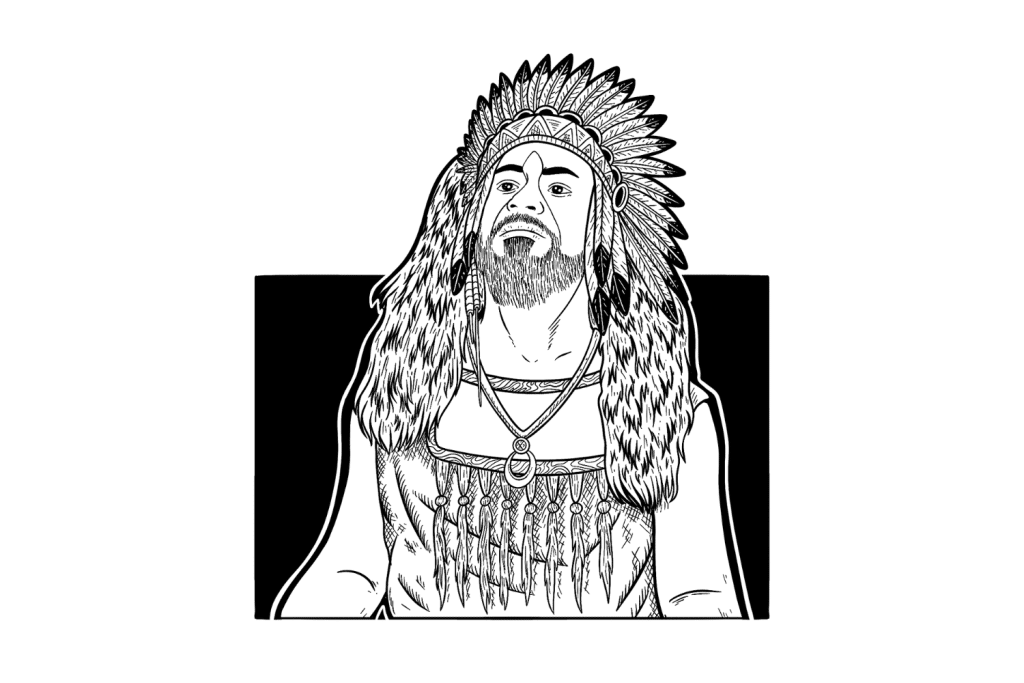
This has many seeking to improve the definition of what it means to be a shaman by excluding those that have not undergone a certain degree of training and acceptance by existing shamanistic communities.
The argument is that those that have a meaningful, psychedelic-induced vision or dream that pushes one towards mysticism and other shamanistic practices is valuable, but it doesn’t automatically make someone a shaman.
Concepts Involved With Shamanism
There are a lot of concepts that are either directly or loosely overlapping with the practice of shamanism, depending on the region in which it’s practiced.
Animism
Animism is the belief that animals, plants, and inanimate objects are the host of spiritual entities. It’s a concept held at the heart of shamanism.
The shaman is able to communicate with these entities through the use of altered states of consciousness, dreams, and ceremony.
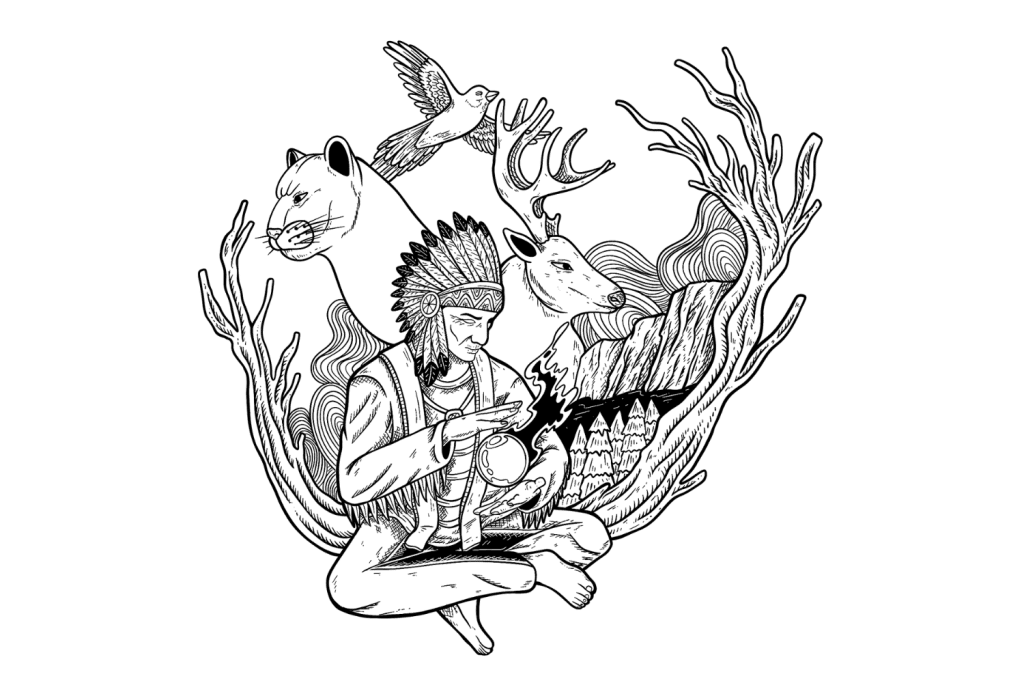
A common theme in shamanism is the idea of a power animal (sometimes called a totem animal), which is a spiritual entity that takes on the form of a particular animal. This animal helps guide the shaman or his patients towards achieving spiritual insight or attaining a better state of health.
Dreaming
Dreams are widely regarded to be a profound source of information about the self, the environment, and our connection with consciousness itself. Many shamans use herbs or rituals designed to help them lucid dream as a way of facilitating the connection with cosmic entities or spirits.
Many people are introduced to their totem animals through dreams, and plants will either allow or deny practitioners to use their medicines through dream imagery.
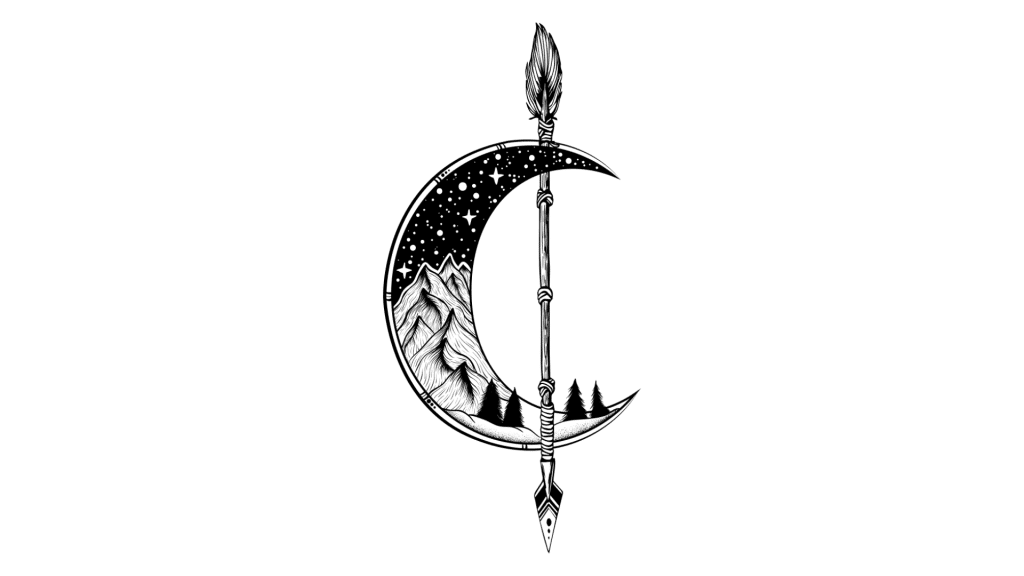
Symbolism seen in dreams is also considered an important component in seeking the spiritual path according to shamanism. This is a concept that overlaps with the philosophy of Carl Jung, Sigmund Freud, and various other modern-day philosophers and psychologists.
Entheogens
An entheogen is a plant, fungi, or other substance that facilitates “non-ordinary states of consciousness” for the purpose of healing or divination.
Substances can be both entheogens and psychedelics (such as magic mushrooms and ayahuasca), but not all psychedelics are entheogens (such as 2C-B, NBOMe, or PCP).
Qi
Qi (pronounced as “chi or chee”) refers to the “life energy” or “vital force” that animates physical form. The term comes from traditional Chinese philosophy, but similar concepts are noted throughout various shamanistic belief systems.
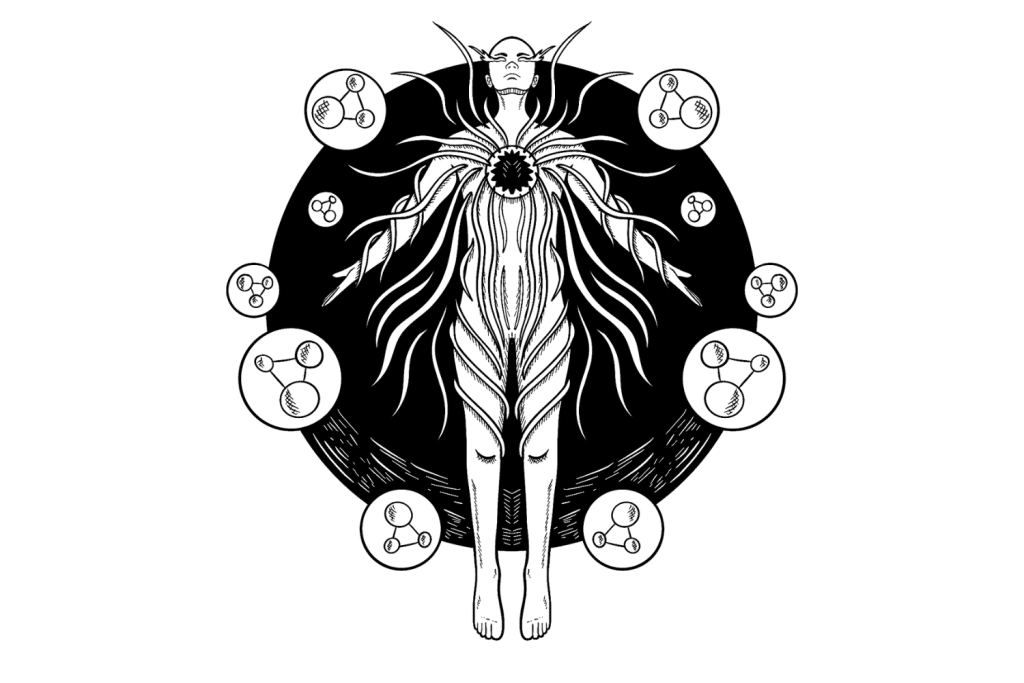
Soul Retrieval
Soul retrieval is a method of healing used by some shamans. The idea is that trauma causes part of the soul to leave the body in order to minimize physical damage. A shaman can then find and guide the soul back to the body through the use of entheogens and altered states of consciousness, ritual, plant and animal allies, and breathwork.
Related: Can Psychedelics Help Heal Trauma?
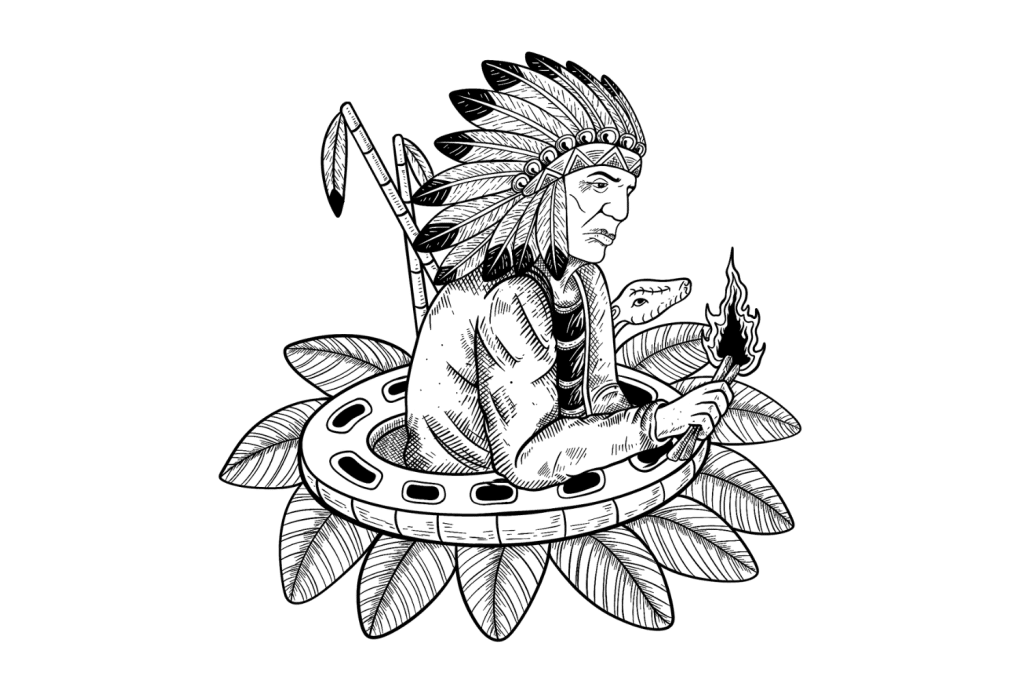
Herbs Used in Shamanism
The herbs shamans use depend on what’s available locally. Most of the herbs used are non-psychoactive or mildly psychoactive, such as tobacco, kambo, or sage.
Plants, animals, and insects are believed to host various deities or spiritual entities. The shaman can form allies with these entities and use them to heal other members of the community.
Psychoactive plants are reserved for ceremonial use and are believed to facilitate communication between the spirit world and the shaman. Plants or fungi used in this way are referred to as entheogens. Plants that facilitate dreaming, specifically, are called oneirogens.
Common shamanic entheogenic & oneirogenic plants and fungi include:
- Ayahuasca — a combination of two Amazonian plants that enable the active component DMT to induce a powerful visionary state of consciousness.
- Magic Mushrooms — Magic mushrooms have been used by shamans and traditional healers throughout North America, South America, and Asia to induce dream-like visions.
- Salvia divinorum — This potent psychoactive herb is used by shamans living in Mexico and Central America. It’s considered a powerful teacher plant.
- Amanita muscaria — This species of fungi was used by various shamanic healers in Siberia and the surrounding regions.
- Peyote & San Pedro — These cacti are both a rich source of the psychoactive compound, mescaline. Sacred cacti are used as a sacrament in traditional shamanistic ceremonies and initiation rituals in Mexico, the Southern United States, and the South American Andes.
- Bufo alvarius — The venom of the Bufo alvarius toad was eaten or smoked to produce powerful hallucinations and altered states of consciousness in shamanistic ceremonies in the Southern United States and Mexico.
- Calea zacatechichi — The so-called “Mexican dream herb” was used by traditional shamans in Mexico for connecting with the spirit world through dreams.
- Silene undulata — This herb is native to South Africa, where it’s used to induce a trance-like state and enhance visionary dream experiences among the Xhosa shamans.
- Blue Lotus Flower — This herb was primarily used by the ancient Egyptians for inducing a trance-like state. It was often employed by priests and leaders before entering a ceremonial sleep chamber. Consciousness itself is thought to have been formed from the blossoming of a lotus flower.
- Tobacco — This sacred herb is considered a central component to many indigenous cultures, not just for smoking, but also for giving offerings or gratitude to the natural world. A shaman specializing in the use of tobacco is called a tobaquero.
- Sweetgrass — Sweetgrass is a sacred herb among many Native American groups. It’s used in prayer, for smudging, and purifying ceremonies.
- Borracherro Tree — Referred to as “Toé” when combined with ayahuasca. The boracherro tree is considered a wise, but harsh plant teacher, similar to tobacco. This plant requires many years of experience to use safely.
- Sananga — Sananga botanical eye drops are a forest medicine brewed by traditional healers in the Amazon rainforest from the roots of the Tabernaemontana undulata plant. It’s used to promote clear vision, both in a physical & spiritual context.
- Chacruna — Psychotria viridis is a popular addition to ayahuasca. It contains a high concentration of DMT which combines with the MAO inhibitors present in the ayahuasca vine.
- Coca — The coca leaf has been used by indigenous cultures in South America for thousands of years. It’s used for it’s ability to increase awareness and gain new insight, and in social settings as a way to promote reciprocal social relations within the group or neighbouring groups.
- Kambo — A secretion from the Giant Monkey frog (Phyllomedusa bicolor). Small burn holes are placed on the skin, followed by drops of venom. Frog medicine is believed to have purifying properties.
- Rapé (Hapé) — A sacred shamanic snuff made by combining various medicinal plants, including tobacco.
Where Does Shamanism Come From?
Shamanism doesn’t refer to any single culture, but the term is likely derived from the term samān — which comes from the Tungus-speaking tribes in Eastern Siberia and Manchuria.
Some experts suggest the Tungus word was derived from the Sanskrit word śramaṇa — which refers to “one who labors or exerts themselves.” It was a term used to describe holy figures or ascetics in Central Asia and various Buddhist practicing regions.
Today, the term is used to describe the practices of cultures all over the world, including Africa, South America, North America, and Asia, in addition to Siberia and Eastern Europe.
Examples of Shamanism Around the World
This list is far from exhaustive but provides some context about what shamanism looks like in different parts of the world.
1. North America
The Inuit and Eskimo (Yupik) peoples host shamans (called angakut) that use trance-like states to ensure an abundance of game and food and improve the fertility of women. Illness is thought to be caused by the entrance of a ghost or malevolent spirit. The shaman is tasked with traveling to the heavens or into the depths of the ocean to retrieve lost or stolen souls to return one’s physical health.
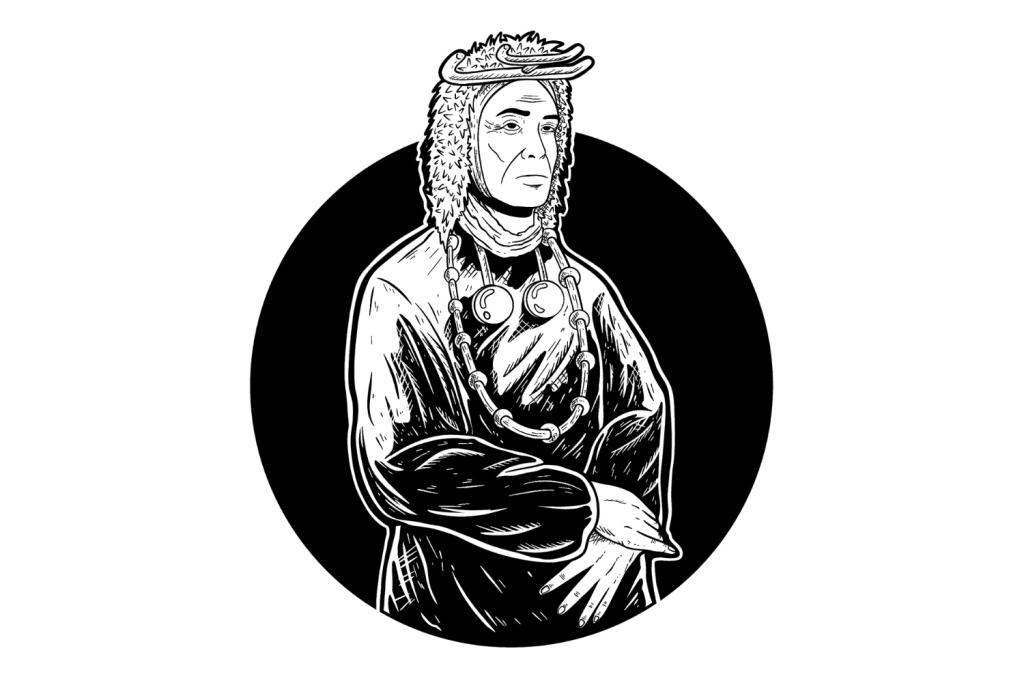
Many American Indian tribes have shamans (medicine man or medicine woman) that develop healing and divinatory power through personal growth and experience. Vision quests, psychoactive plants and fungi, initiation trials, dream interpretation, and various ceremonies are all used to enhance the healing capacity and power of their spiritual healers.
2. South America
Shamanistic practices are prevalent in South American indigenous groups. A curandero is a term used for a spiritual healer or shaman that administers hallucinogenic plants and fungi for the purposes of healing and divination.
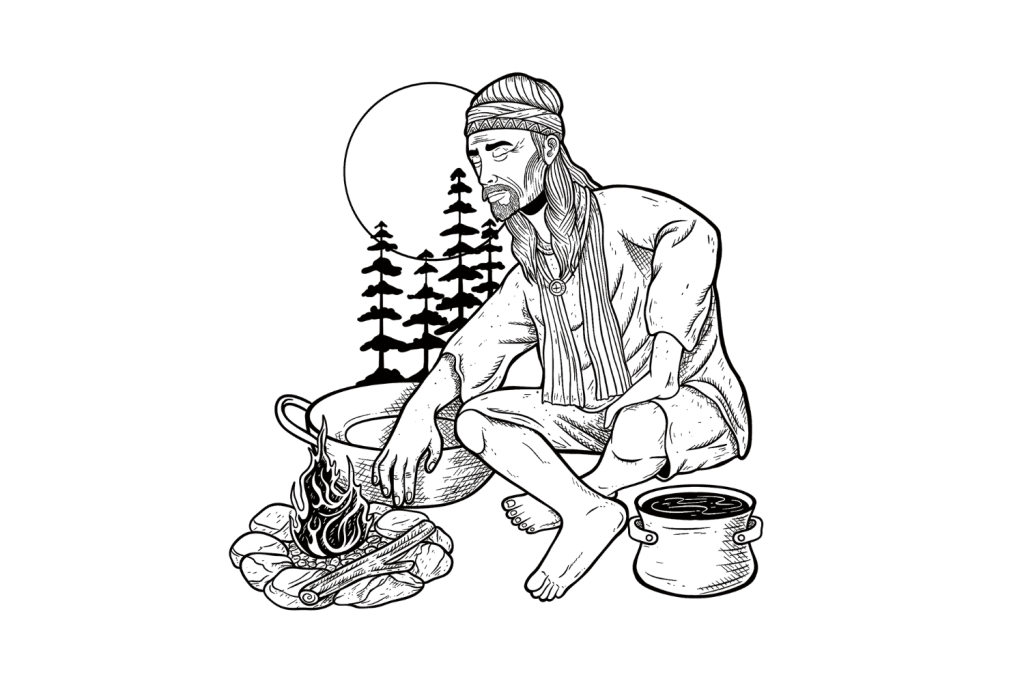
There are separate specializations for curanderos as well depending on the sacred plant medicines they rely on — for example, an ayahuascero is one who works with ayahuasca, a peyotero is one who works with peyote, and a tabaquero is one who works with tobacco.
3. Asia
Shamanism is common among many tribes living around Siberia, and the practice is alive and well today. Siberia and the surrounding regions are thought to be the homeland of shamanic practice. Some of the practices reported in this region include ceremonial dancing, drumming, singing, and the consumption of a hallucinogenic mushroom called mukhomor (Amanita muscaria).
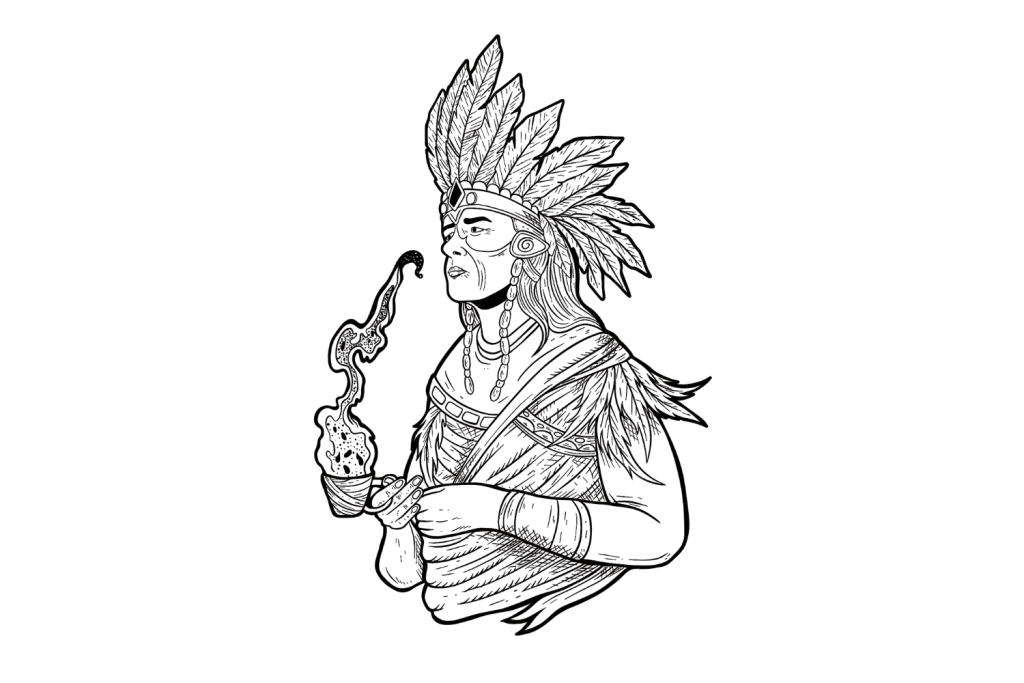
In China and Mongolia, the nomadic Oroqen people had shamans that cared for the spiritual guidance and healing for the community. A large part of their belief system revolved around animism — especially involving the bear (amaha) and the tiger (wutaqi). The last Oroquen shaman died in 2000.
In the Vietnamese folk tradition, Lên đồng, a shaman (referred to as a cô đồng), enters a trance and incarnates various deities through mimicry.
4. Africa
Shamans of the Xhosa people of South Africa (called amagqirha) use a sacred dream-enhancing herb called undlela zimhlophe (Silene undulata) to communicate with the spirit world, among other spiritual ceremonies and traditions that align with the global definition of shamanism.
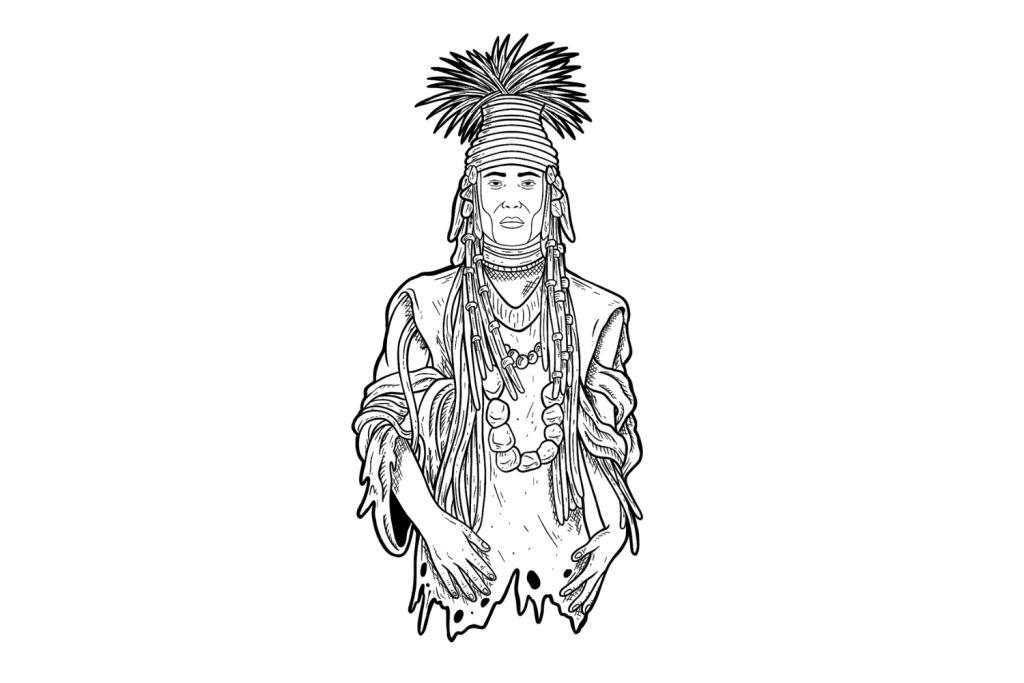
Other tribes living in South Africa, such as the Zulu people, have a syncretic religion, which blends shamanistic practices via traditional healers (called sangoma) with Christianity.
In Mali, Dogon shamans enter trance-like states to communicate with the sprites, particularly a spirit by the name of Amma, who provides them with healing and divination abilities.
What is Neo-Shamanism?
Neoshamanism (sometimes called plastic shamanism) refers to a form of shamanism practiced by Western people as part of new-age spirituality. These practices are not a direct representation of the traditional systems they were derived from and are instead adapted to meet modern markets and interests.
Neoshamanic practices follow similar concepts of traditional shamanism, such as the use of altered states of consciousness, drumming or singing, the seeking of spirit guides or power animals, and more.
There are a few differences anthropologists have pointed out that differentiate traditional shamanism from neo-shamanism (generalized):
- The path to becoming a shaman — traditional shamans are usually chosen by the community or spirits themselves (through existing shamans within the community). Anybody can choose to follow the path of neo-shamanism.
- Spiritual motivations — A traditional shaman’s role typically revolves around maintaining cosmic balance. The neo-shaman practices shamanism for personal development or to provide goods and services in a capitalist world.
- Initiation rituals — Initiation rituals for traditional shamans vary, but the process often involves having to endure intense pain, fear, or personal loss. Initiation rituals are often dangerous and time-consuming. The initiation of neo-shamans rarely, if ever, involves such a path.
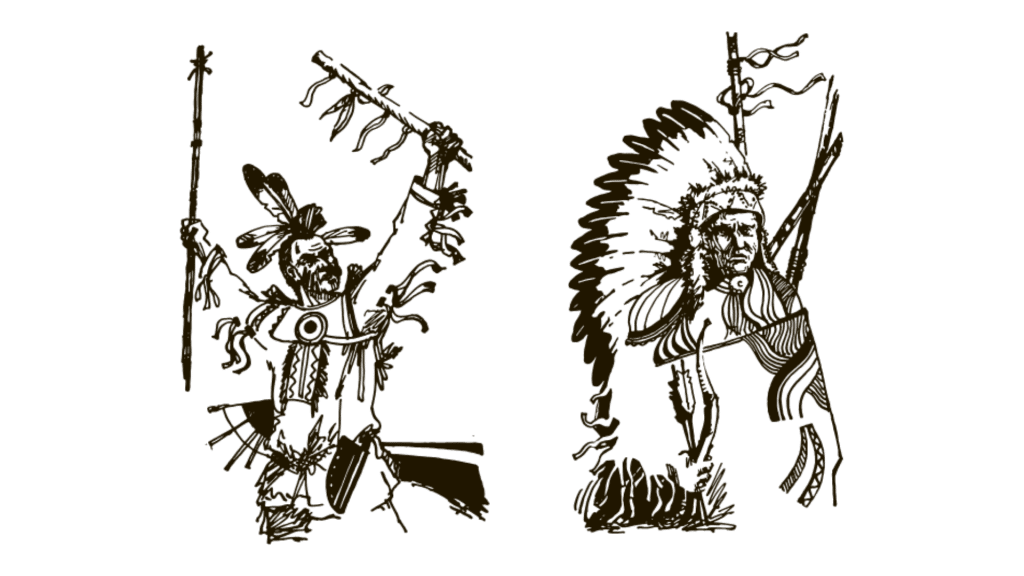
Final Thoughts: What is Shamanism?
Shamanism is an umbrella term for a wide range of religious practices that involve communication with the spirit world via the help of psychoactive plants, trance-like states, and dreams.
There are many different types of shamanism depending on local traditions and culture.
Many experts make a clear distinction between traditional shamanism and neo-shamanism. In traditional shamanism, initiation rituals and mentorship are required before one can earn the respected title of a shaman. The pathway to becoming a shaman is well defined within a given shamanistic culture. Most people can’t become a shaman through the traditional pathway, and those that do are required to dedicate themselves wholly to the practice. Ensuring this dedication often involves a significant amount of effort, profound pain, constant verification of one’s motivations, and deep personal loss.
Neo-shamanism is a modern adoption of select shamanistic principles. Due to a lack of defined pre-requisites, anybody can technically become a shaman, but many argue it lacks the critical vetting process traditional shamanistic initiation customs establish.

